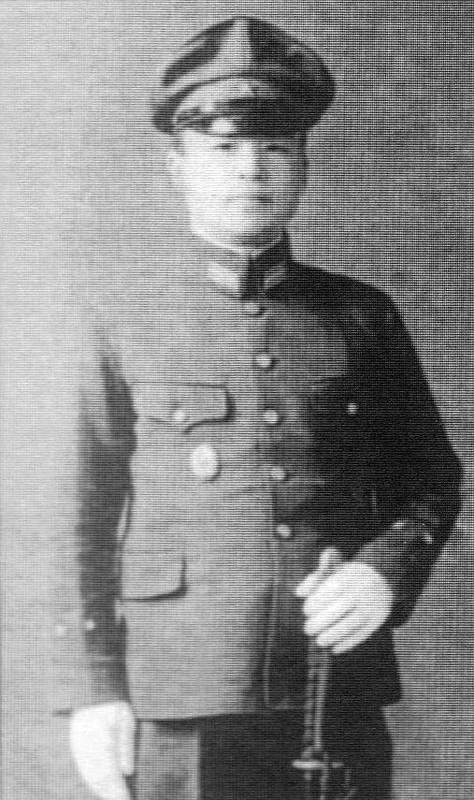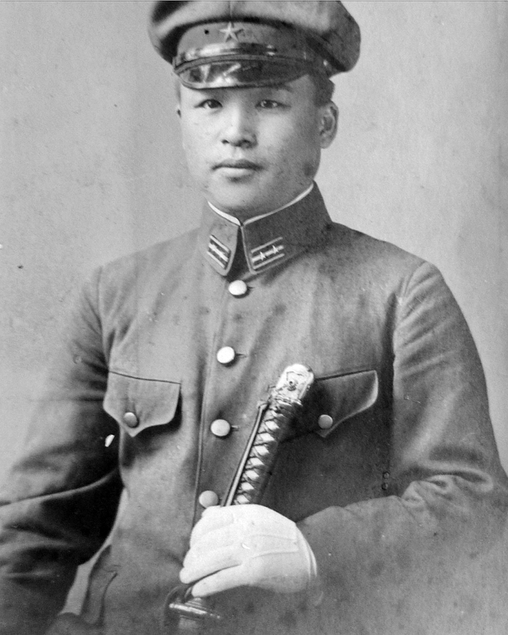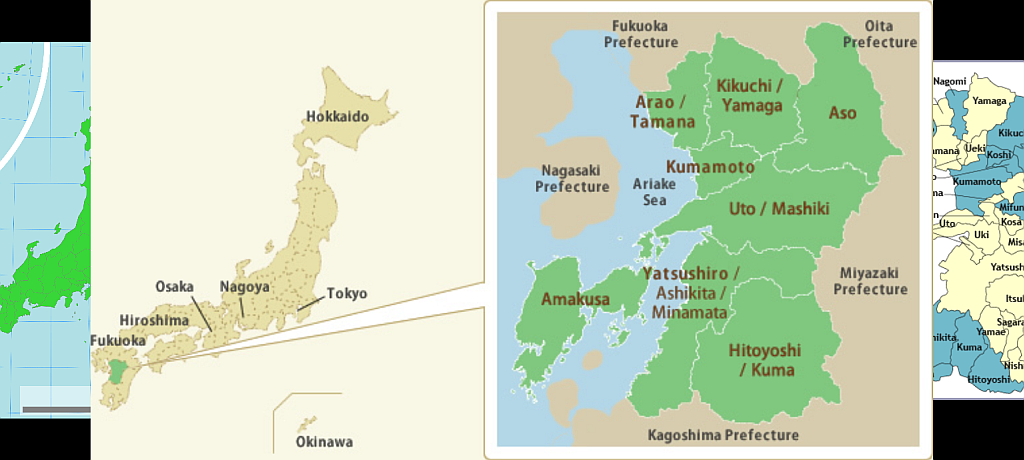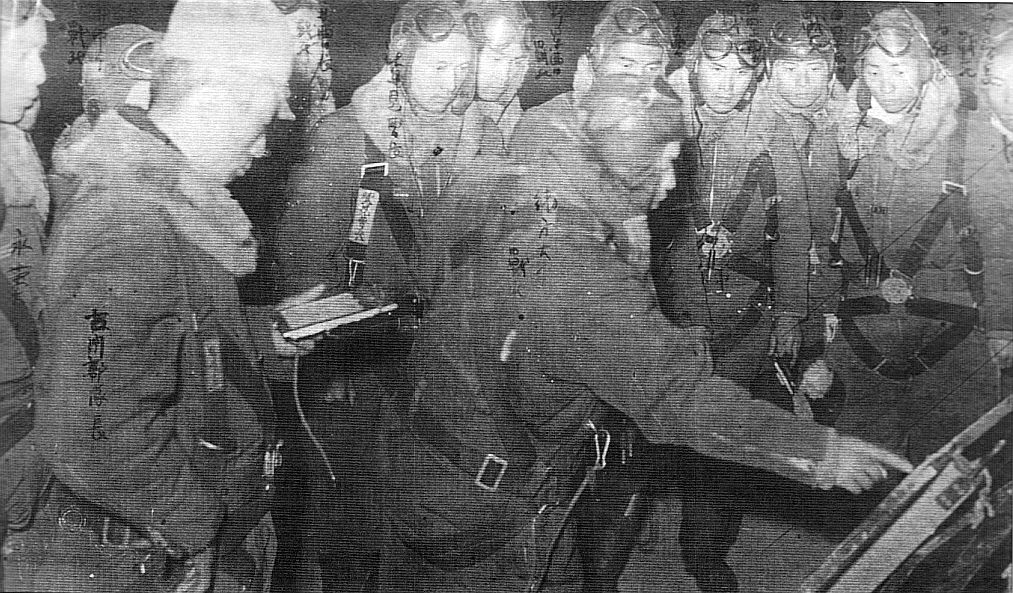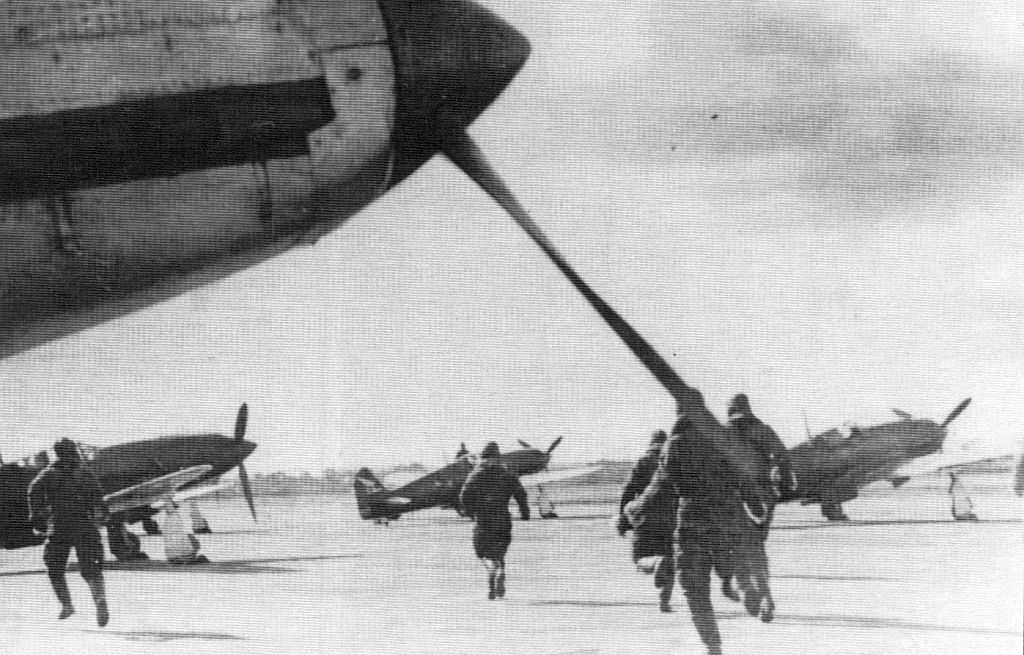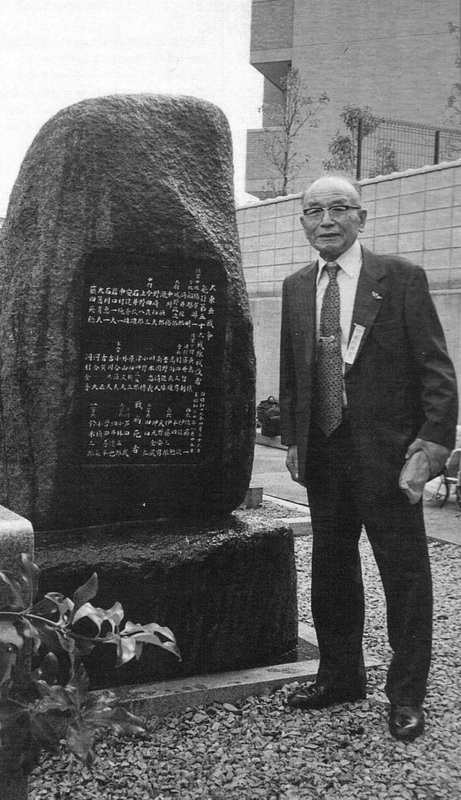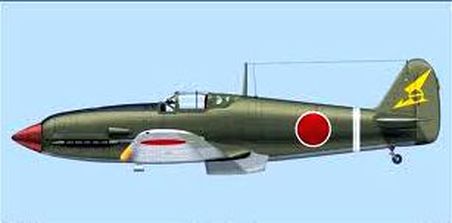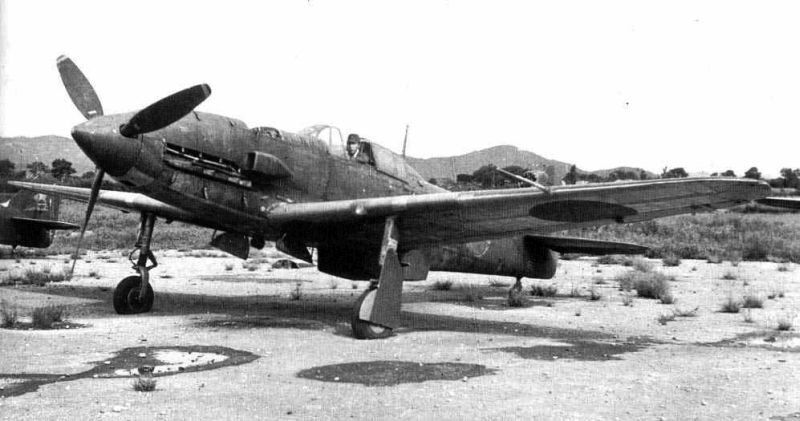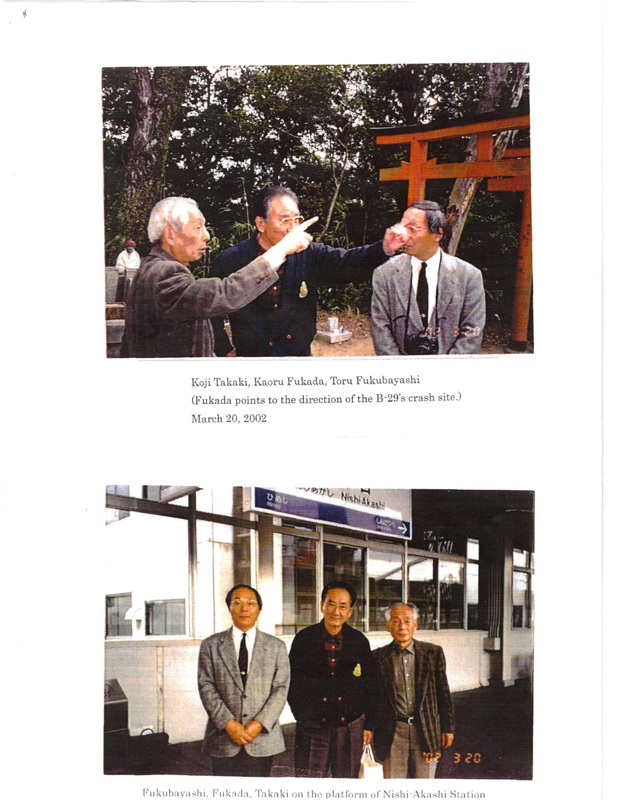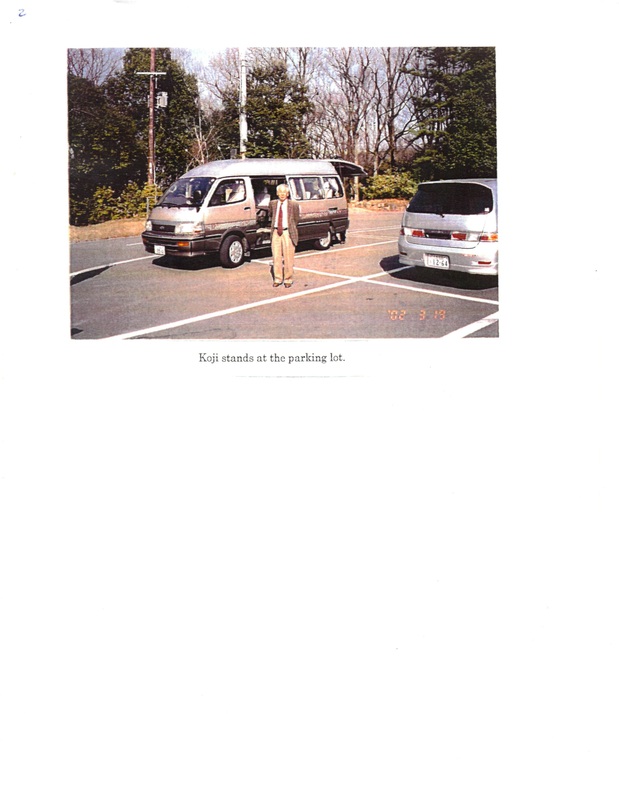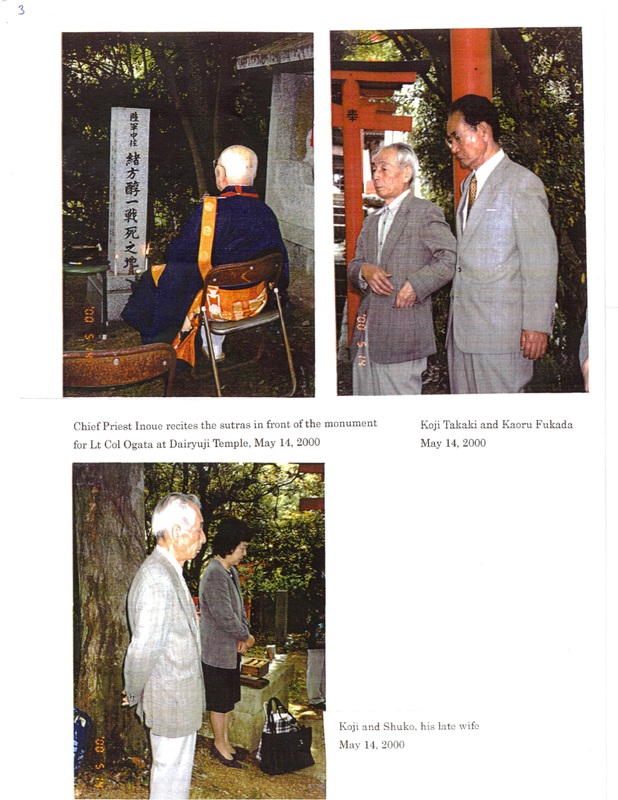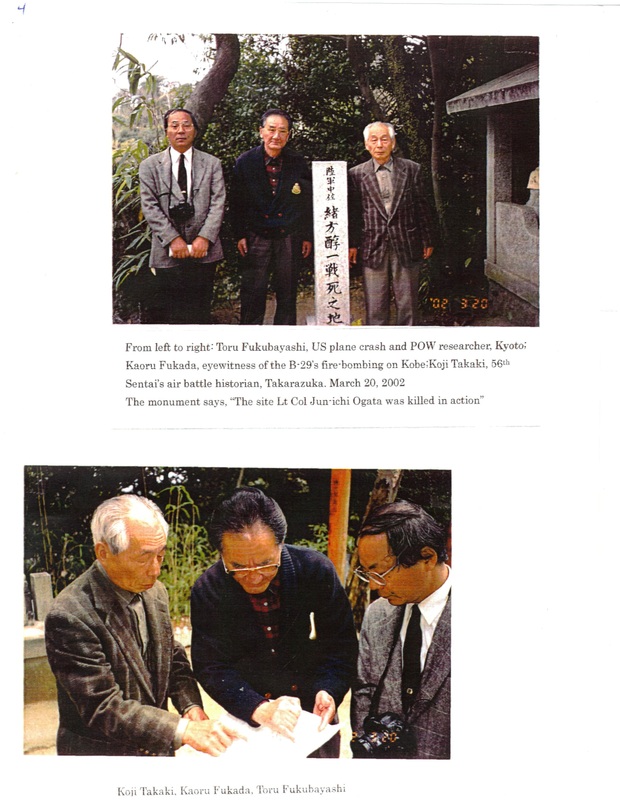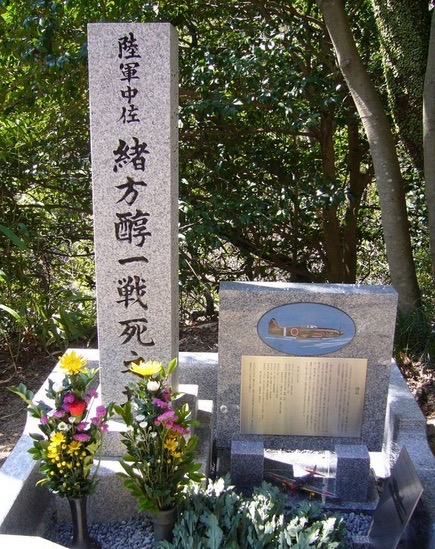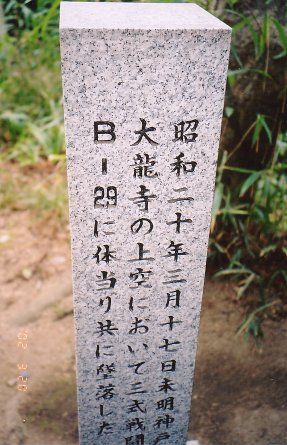Junichi Ogata of the 56th Sentai
"Enemy bombers are clearly lit up by an inferno on the ground of the urban area.
One plane destroyed. I'll keep on attacking."
*This was the last message heard from Captain Ogata before he collided with the Z Square 8.
Capt. Ogata was from a wealthy, elitist family and attended Military School. According to my Japanese friends, he definitely would have been a career military officer.
He was from Kumamoto Prefecture on the southwest part of the island of Kyushu, southwest of Japan proper and 50 miles west of Hiroshima. It is a beautiful land and home to the Aso Caldera volcano, as well as Kumamoto Castle.
After WWII, the people of Japan had lost everything, including the Ogata family. Capt. Ogata's wife and baby moved in with his family, and she did whatever work she could to support herself and her daughter and help the Ogata family.
Capt. Ogata's wife was able to get to Mt. Futatabi for the dedication of his memorial by the 56th Sentai on March 17, 1999. But, she was too frail to climb the mountain to attend the actual dedication ceremony.
One plane destroyed. I'll keep on attacking."
*This was the last message heard from Captain Ogata before he collided with the Z Square 8.
Capt. Ogata was from a wealthy, elitist family and attended Military School. According to my Japanese friends, he definitely would have been a career military officer.
He was from Kumamoto Prefecture on the southwest part of the island of Kyushu, southwest of Japan proper and 50 miles west of Hiroshima. It is a beautiful land and home to the Aso Caldera volcano, as well as Kumamoto Castle.
After WWII, the people of Japan had lost everything, including the Ogata family. Capt. Ogata's wife and baby moved in with his family, and she did whatever work she could to support herself and her daughter and help the Ogata family.
Capt. Ogata's wife was able to get to Mt. Futatabi for the dedication of his memorial by the 56th Sentai on March 17, 1999. But, she was too frail to climb the mountain to attend the actual dedication ceremony.
We wish to thank Tony Holmes and Osprey Printing in London, for giving us permission to use the photographs on Captain Ogata's page. Without their participation, our inclusion of Capt. Ogata's information on our website would have been incomplete.
Thank you Tony.
A very special thank you goes to Mr. Henry Sakaida, the author of the book "B-29 Hunters of the JAAF." Henry was instrumental in obtaining much Japanese documentation on their defense of their homeland during WWII and putting it in writing.
It has been a pleasure to get to know Henry and we are thankful for his participation in our research. Without his research, we would know nothing about Capt. Ogata and his participation during WWII in his defense of Japan.
Thank you Tony.
A very special thank you goes to Mr. Henry Sakaida, the author of the book "B-29 Hunters of the JAAF." Henry was instrumental in obtaining much Japanese documentation on their defense of their homeland during WWII and putting it in writing.
It has been a pleasure to get to know Henry and we are thankful for his participation in our research. Without his research, we would know nothing about Capt. Ogata and his participation during WWII in his defense of Japan.
KIA over Kobe, Japan on the night of 17 March 45 when his fighter inadvertently rammed our Uncle Bob's B-29,
the Z Square 8, "Mission to Albuquerque."
Captain Ogata first flew with the 77th Sentai in Burma, where he claimed 8 U.S. bombers shot down. Flying with the 56th Sentai from Itami Field near Osaka, Japan, he was credited with four B-29s shot down and five damaged while serving with the JAAF home defense unit.
(Sentai in Japanese is a military unit meaning "Squadron" or "Task Force.")
A respected leader and excellent pilot, Ogata was a fighter defense pilot and NOT a Kamikaze pilot. Kamikaze units were specifically set up by the JAAF in Japan by the 4th Sentai at Ozuki in Western Honshu.
A "ramming" by a 56th Sentai pilot was done at his discretion only when dictated by conditions of his aerial combat.
In Captain Ogata's case, we cannot determine why he "rammed" our Uncle Bob's B-29, the Z Square 8.
POWs and Japanese witnesses on the ground that night stated they saw a bright flash like a shooting star streak across the sky, then a huge explosion when Captain Ogata's fighter plane made impact with the Z Square 8. Perhaps Captain Ogata's plane with hit by machine gun fire from a B-29, even though General LeMay had ordered limited ammunition on the bombers. But many crews ignored this order. He may have been hit by his own anti-aircraft artillery fire, or
maybe he simply had a mechanical problem with his engine. We do not know, and will not speculate.
Captain Ogata was KIA soon after his daughter was born, just like our Uncle Bob.
He was posthumously promoted to Lt. Colonel.
the Z Square 8, "Mission to Albuquerque."
Captain Ogata first flew with the 77th Sentai in Burma, where he claimed 8 U.S. bombers shot down. Flying with the 56th Sentai from Itami Field near Osaka, Japan, he was credited with four B-29s shot down and five damaged while serving with the JAAF home defense unit.
(Sentai in Japanese is a military unit meaning "Squadron" or "Task Force.")
A respected leader and excellent pilot, Ogata was a fighter defense pilot and NOT a Kamikaze pilot. Kamikaze units were specifically set up by the JAAF in Japan by the 4th Sentai at Ozuki in Western Honshu.
A "ramming" by a 56th Sentai pilot was done at his discretion only when dictated by conditions of his aerial combat.
In Captain Ogata's case, we cannot determine why he "rammed" our Uncle Bob's B-29, the Z Square 8.
POWs and Japanese witnesses on the ground that night stated they saw a bright flash like a shooting star streak across the sky, then a huge explosion when Captain Ogata's fighter plane made impact with the Z Square 8. Perhaps Captain Ogata's plane with hit by machine gun fire from a B-29, even though General LeMay had ordered limited ammunition on the bombers. But many crews ignored this order. He may have been hit by his own anti-aircraft artillery fire, or
maybe he simply had a mechanical problem with his engine. We do not know, and will not speculate.
Captain Ogata was KIA soon after his daughter was born, just like our Uncle Bob.
He was posthumously promoted to Lt. Colonel.
The following information reinforces my belief that Capt. Ogata did not ram my uncle's B-29 on purpose.
1. The other Japanese pilots claim this was an accident as there was no suicide orders for them and Capt. Ogata was an experienced pilot. (Taken from a report on the death of Z Square 8 gunner, John T. Berry)
2. As for Capt. Ogata, some pilots who were under him say, "We don't think that Captain Ogata rammed intentionally even if he was determined to risk his life for a near-ramming attack. As it was dark, even a skilled and experienced leader-pilot could collide his target plane by a margin of a split second for his instant manipulation." (From Koji Takaki, Japanese aviation expert, author & researcher.)
1. The other Japanese pilots claim this was an accident as there was no suicide orders for them and Capt. Ogata was an experienced pilot. (Taken from a report on the death of Z Square 8 gunner, John T. Berry)
2. As for Capt. Ogata, some pilots who were under him say, "We don't think that Captain Ogata rammed intentionally even if he was determined to risk his life for a near-ramming attack. As it was dark, even a skilled and experienced leader-pilot could collide his target plane by a margin of a split second for his instant manipulation." (From Koji Takaki, Japanese aviation expert, author & researcher.)
CAPT. JUNICHI OGATA'S LAST COMBAT
Written
by Koji Takaki
Written
by Koji Takaki
The Army 56th Sentai, one of the two main intercept groups in the Osaka-kobe area, bitterly regretted when they lost
Capt. Junichi Ogata in its intercept fight during a big incendiary raid on Kobe on 16/17 March 1945. Ogata had been fighting always at the head of the squadron since its first combat against B-29s from Chengtu, China, over the Yellow Sea on 25 October 1944.
At dawn on 17 March Capt Nohoru Nagasue's division of four Tony fighters was launched at first. Capt. Ogata's division of four planes took off after an interval of 80 minutes to avoid flying in an overlapped air area in the darkness.
Maj. Haruyoshi Furukawa, commander at Itami Airfield received a report on the radio from Capt.Ogata
orbiting over Kobe (located 15 miles southwest of Itami), "Enemy bombers are clearly lit up by an inferno on the ground of the urban areas." In succession, another report came in. "One plane destroyed. I'll keep on attacking."
This was the last message. No word was received from him after that.
Then, W.O. Kuniyoshi Hasegawa and some of the ground crewmen at the base saw a spot of light streaming like a shooting star into a B-29 that was irradiated by two crossing lights of the searchlights. At the next moment a fireball flamed up.
Maj. Furukawa depicts an extremely gruesome sight like a purgatory at that night,
"The roaring flames from Kobe City shot skywards, inviting boiling clouds and strong winds. With the wind blowing from west there was a menacing atmosphere prevailing all over the area."
On the morning a flight boot with the name painted Ogata in white was discovered in the wreckage of a B-29 that fell at the ridge of Mt. Futatabi in the Maya Mountains of Kobe. His Tony fighters propeller, landing gear and radiator
were also found dropped in a nearby area. It was a scene that freshly reminded those who were there of his bloody
body crash.
Capt. Ogata who had an early score of 8 bombers destroyed when he was in the 77th Sentai stationed in Burma had already destroyed 4 B-29s and damaged 5 in the home defense air combat. Ogata, born in Kumamoto, Kyushu, 26 at age, a graduate from the 53rd term of Army Air Academy and a brave warrior in the sky, was a superior pilot and leader outstanding both in the mind and skills, had been familiarly respected by all of the members of the squadron.
At his home near Itami Airfield there was his baby girl who had just been born.
Ogata was the second pilot in the squadron, who rammed down a B-29 after 1/Lt. Toebiro Wakui (AA64) was killed in a ramming at a B-29 over Nagoya on 8 Jan 1945. On the date the 21st BG had just stepped up from precision bombing on the military targets at a high altitude to a first trial of indiscriminate fire bombing on the urban areas by napalm incendiary bombs which would fall like a downpour of rain.
Maj. Furukawa recollect, "It was endurable for us in the air only to see the burning cities and frightened people with no means to cope with. This led the flyers to silently determining to risk their lives by using ramming tactics."
As for Capt. Ogata, some pilots who were under him say, "We don't think that Captain Ogata rammed intentionally, even if he was determined to risk his life for a near-ramming attack. As it was dark, even a skilled and experienced leader-pilot could collide his target plane by a margin of a split second for his instant manipulation."
(*Note): No suicide attack team was organized in the 56th Sentai, whereas such teams were formed in the intercept fighter units in and around Tokyo. The 56th Sentai was a rare single-engined fighter unit together with the 246th Sentai with KI-44 Tojos based at Taiahn Airfield, Osaka, that made night intercept sorties during the air raids on Osaka
on 13/14 and Kobe on 16/17 March 1945. Three well trained pilots of the 56th were killed or heavily wounded in accidents at take-off on the nocturnal sorties.
MSgt (later W.O.) Tadeo Sumi with over 2000 flying hours, the only ace in the 56th, claimed 4 B-29s destroyed and 3 damaged during his repeated sorties over Osaka on 13/14 March, but he mistook an upper cloud layer for a lower one.
He tried to descend towards the upper cloud layer and his plane stalled. He bailed out but was hit by the rudder on his shoulder and heavily wounded.
On the March 13/14 mission, the 21st BG lost 2 B-29s. NO STRATEGIC TARGETS LEFT
says "one lost on take-off and one missing." Then, it is a riddle which pilot, Sumi or Fujimoto, 246th, downed it.
On 16/17 March, it is recorded that 3 B-29s were lost.
It may be judged that they were all lost to the ramming of Capt. Ogata, MSgt Fujimoto and Sgt. Yukio Ikute of the 248th, though 56th other pilots claimed some planes destroyed.
(Article republished with permission)
Capt. Junichi Ogata in its intercept fight during a big incendiary raid on Kobe on 16/17 March 1945. Ogata had been fighting always at the head of the squadron since its first combat against B-29s from Chengtu, China, over the Yellow Sea on 25 October 1944.
At dawn on 17 March Capt Nohoru Nagasue's division of four Tony fighters was launched at first. Capt. Ogata's division of four planes took off after an interval of 80 minutes to avoid flying in an overlapped air area in the darkness.
Maj. Haruyoshi Furukawa, commander at Itami Airfield received a report on the radio from Capt.Ogata
orbiting over Kobe (located 15 miles southwest of Itami), "Enemy bombers are clearly lit up by an inferno on the ground of the urban areas." In succession, another report came in. "One plane destroyed. I'll keep on attacking."
This was the last message. No word was received from him after that.
Then, W.O. Kuniyoshi Hasegawa and some of the ground crewmen at the base saw a spot of light streaming like a shooting star into a B-29 that was irradiated by two crossing lights of the searchlights. At the next moment a fireball flamed up.
Maj. Furukawa depicts an extremely gruesome sight like a purgatory at that night,
"The roaring flames from Kobe City shot skywards, inviting boiling clouds and strong winds. With the wind blowing from west there was a menacing atmosphere prevailing all over the area."
On the morning a flight boot with the name painted Ogata in white was discovered in the wreckage of a B-29 that fell at the ridge of Mt. Futatabi in the Maya Mountains of Kobe. His Tony fighters propeller, landing gear and radiator
were also found dropped in a nearby area. It was a scene that freshly reminded those who were there of his bloody
body crash.
Capt. Ogata who had an early score of 8 bombers destroyed when he was in the 77th Sentai stationed in Burma had already destroyed 4 B-29s and damaged 5 in the home defense air combat. Ogata, born in Kumamoto, Kyushu, 26 at age, a graduate from the 53rd term of Army Air Academy and a brave warrior in the sky, was a superior pilot and leader outstanding both in the mind and skills, had been familiarly respected by all of the members of the squadron.
At his home near Itami Airfield there was his baby girl who had just been born.
Ogata was the second pilot in the squadron, who rammed down a B-29 after 1/Lt. Toebiro Wakui (AA64) was killed in a ramming at a B-29 over Nagoya on 8 Jan 1945. On the date the 21st BG had just stepped up from precision bombing on the military targets at a high altitude to a first trial of indiscriminate fire bombing on the urban areas by napalm incendiary bombs which would fall like a downpour of rain.
Maj. Furukawa recollect, "It was endurable for us in the air only to see the burning cities and frightened people with no means to cope with. This led the flyers to silently determining to risk their lives by using ramming tactics."
As for Capt. Ogata, some pilots who were under him say, "We don't think that Captain Ogata rammed intentionally, even if he was determined to risk his life for a near-ramming attack. As it was dark, even a skilled and experienced leader-pilot could collide his target plane by a margin of a split second for his instant manipulation."
(*Note): No suicide attack team was organized in the 56th Sentai, whereas such teams were formed in the intercept fighter units in and around Tokyo. The 56th Sentai was a rare single-engined fighter unit together with the 246th Sentai with KI-44 Tojos based at Taiahn Airfield, Osaka, that made night intercept sorties during the air raids on Osaka
on 13/14 and Kobe on 16/17 March 1945. Three well trained pilots of the 56th were killed or heavily wounded in accidents at take-off on the nocturnal sorties.
MSgt (later W.O.) Tadeo Sumi with over 2000 flying hours, the only ace in the 56th, claimed 4 B-29s destroyed and 3 damaged during his repeated sorties over Osaka on 13/14 March, but he mistook an upper cloud layer for a lower one.
He tried to descend towards the upper cloud layer and his plane stalled. He bailed out but was hit by the rudder on his shoulder and heavily wounded.
On the March 13/14 mission, the 21st BG lost 2 B-29s. NO STRATEGIC TARGETS LEFT
says "one lost on take-off and one missing." Then, it is a riddle which pilot, Sumi or Fujimoto, 246th, downed it.
On 16/17 March, it is recorded that 3 B-29s were lost.
It may be judged that they were all lost to the ramming of Capt. Ogata, MSgt Fujimoto and Sgt. Yukio Ikute of the 248th, though 56th other pilots claimed some planes destroyed.
(Article republished with permission)
The 4 photographs below are of the memorial for Capt. Ogata in Kobe courtesy of our friend Koji Takaki of Japan
